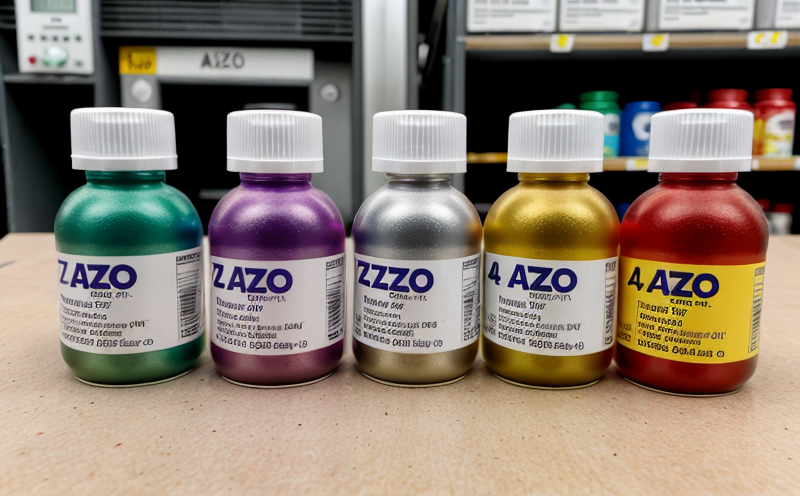Analysis of heavy metal content in protective workwear
The analysis of heavy metal content in protective workwear is a critical aspect of ensuring worker safety and compliance with international standards. Heavy metals such as lead, cadmium, mercury, and arsenic can be harmful if they are present in high concentrations or leach from the materials used in protective clothing. This service ensures that the protective workwear meets strict health and safety requirements set by regulatory bodies like OSHA (Occupational Safety and Health Administration), EN 14126:2003, and ISO standards.
Our laboratory uses state-of-the-art analytical techniques such as Inductively Coupled Plasma Mass Spectrometry (ICP-MS) to perform precise quantification of heavy metals in protective clothing. The process involves several steps, starting with the careful sampling and preparation of the workwear samples. This may include cutting out a representative portion of the garment, cleaning it thoroughly, and digesting it using strong acids or bases to release any bound heavy metals.
Once the sample is prepared, it undergoes rigorous analysis via ICP-MS, which allows for accurate detection down to parts per billion (ppb) levels. The results are then compared against established limits for various types of protective clothing as outlined in relevant standards and guidelines. This service also includes providing detailed reports that outline findings, including any potential risks associated with the detected heavy metal content.
The importance of this testing cannot be overstated. Workers who wear protective clothing may come into contact with hazardous materials throughout their workday, making it essential to ensure these garments do not contribute additional risk factors due to residual heavy metals. By offering comprehensive analysis services for heavy metals in protective workwear, we help our clients maintain high standards of occupational health and safety.
Our team of experts works closely with each client to understand their specific needs and tailor the testing process accordingly. We offer custom packages that cater specifically to different industries such as manufacturing, construction, healthcare, and more. Our goal is not only to meet but exceed regulatory requirements; we strive for excellence in every aspect of our work.
| Sample Type | Heavy Metal Tested For | Methodology Used | Expected Reporting Time |
|---|---|---|---|
| Clothing Fabrics | Pb, Cd, Hg, As | ICP-MS Analysis | 2 weeks |
| Gloves & Goggles | Pb, Cd, Hg, As | ICP-MS Analysis | 1 week |
| Helmets & Boots | Pb, Cd, Hg, As | ICP-MS Analysis | 2 weeks |
Quality and Reliability Assurance
We take great pride in maintaining the highest standards of quality assurance within our laboratory. Our team adheres strictly to international standards such as ISO/IEC 17025, ensuring that all analytical procedures are conducted under controlled conditions and meet strict accuracy and precision requirements.
To guarantee reliability, we employ experienced analysts who undergo continuous training in the latest techniques and methodologies. Regular calibration of equipment using certified reference materials further enhances the dependability of our results. Additionally, we maintain a robust quality control system that includes internal audits and external accreditation to ensure compliance with all applicable regulations.
Our commitment extends beyond just meeting standards; we strive for excellence by incorporating best practices throughout every stage of the testing process—from sample preparation through final reporting. By doing so, we provide our clients with accurate, reliable data they can trust when making important decisions about their protective workwear.
Competitive Advantage and Market Impact
In today’s competitive market, maintaining compliance with regulations related to occupational health and safety is crucial for any organization. By offering comprehensive analysis of heavy metal content in protective workwear, our clients gain several key advantages:
- Enhanced reputation: Demonstrating a commitment to worker safety can significantly enhance an employer’s public image.
- Cost savings: Early identification and rectification of issues related to heavy metals help avoid costly recalls or replacements later on.
- Better decision-making: Armed with precise data, managers have better insight into which products need improvement, leading to smarter investment choices.
The ability to demonstrate compliance with international standards also opens up new markets for manufacturers who can now confidently sell their products globally. This service not only supports internal operations but also aids in expanding business horizons by ensuring that all products meet stringent safety criteria.
Use Cases and Application Examples
| Industry Sector | Product Type | Risk Factor | Testing Frequency |
|---|---|---|---|
| Mining | Pneumatic Hoses | Exposure to lead from mining processes | Quarterly |
| Construction | Steel-toed Boots | Chromium contamination from steel manufacturing | Semi-annually |
| Hospitality | Cleaning Cloths | Lead dust inhalation risks in cleaning operations | Biennially |





